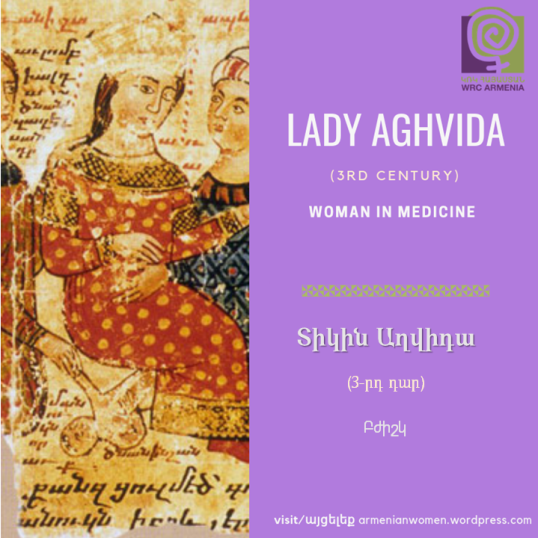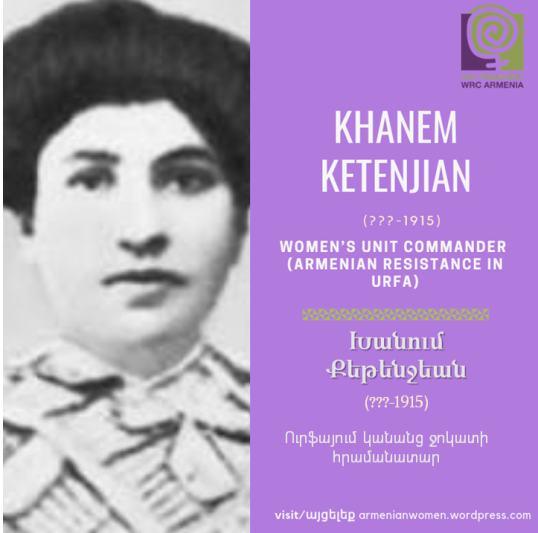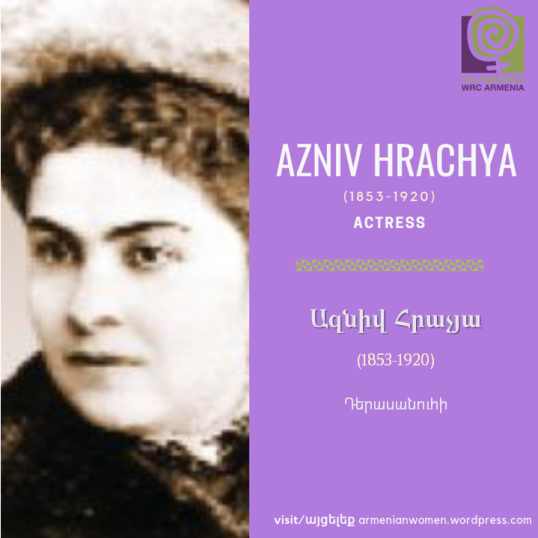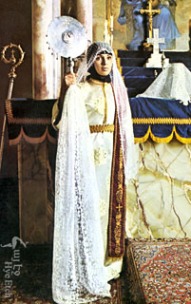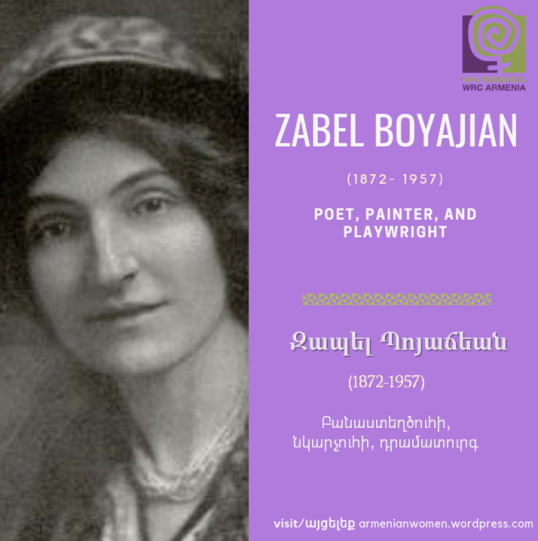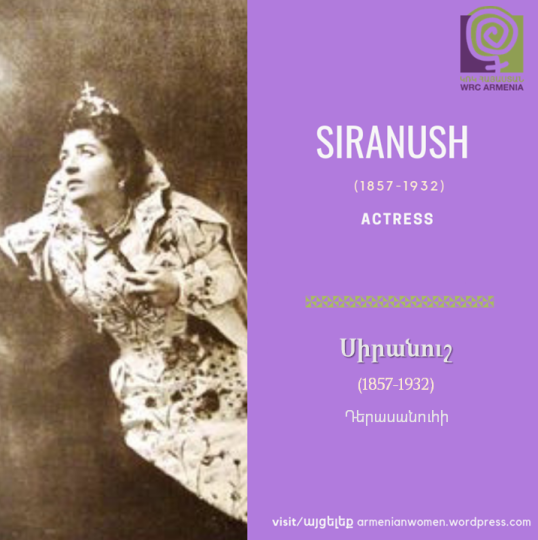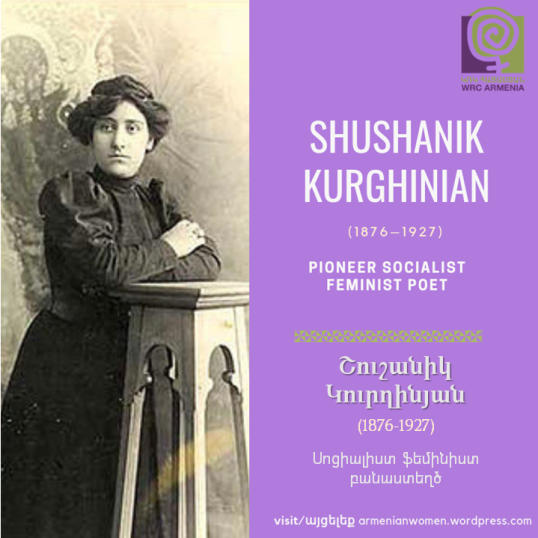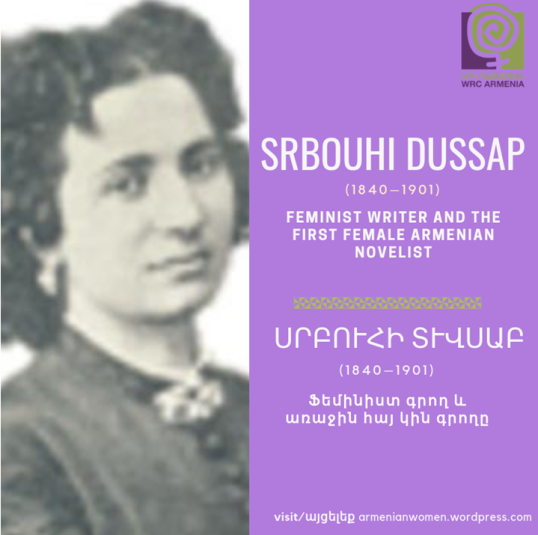
“I despise injustice and prejudice. Indignantly I see the chains with which women are so enslaved that neither their words, nor their actions, nor their slightest movements are natural or true. Can truth survive, burdened by such a yoke? The pitiful condition of women has always distressed me. These sad victims of society are ashamed to be loving lest they reveal that they have hearts; ashamed to utter the word “injustice” lest it reveal that they have rights to declare; ashamed to explore religious and social corruption lest it demonstrate that they possess conscience and reason. They are even ashamed to reveal their deepest selves, to declare: “This is who I am, I am also to be reckoned with…” Heads bent, they live from hand to mouth, passing from the world, without presence; the more unobtrusive the path, the more it is commended.” – Srpuhi Dussap (excerpt from the preface of the book Mayda, 1883 – translated by Elise Antreassian)
Կը կրկնեմ՝ անիրավության և նախապաշարմանց թշնամին եմ․ հետևապես սրտմտելով կը տեսնեմ այն շղթաները որով կանացի սեռը կաշկանդված է․ այնպես որ կնոջ ո՛չ խոսքը, ո՛չ գործը և ո՛չ շարժումը բնական է կամ ճշմարիտ․ և միթե լուծի ներքև ճշմարտությունը կրնա՞ ապրիլ երբեք։ Կնոջ ցավալի վիճակը խորհրդածությանցս առարկա եղած է միշտ․ զի կինն ընկերության ողորմելի զոհն է։ Կ՚ամաչե նա սիրելու՝ այսինքն սիրտ մ՚ունենալը խոստովանելու․ կ՚ամաչե արդարության բառը հնչելու՝ այսինքն իրավունք մ՚ունենալը հայտարարելու․ կ՚ամաչե կրոնից և օրինաց զեղծմունքը հայտնելու՝ այսինքն խիղճ և բանականություն ունենալը ապացուցանելու․ վերջապես կ՚ամաչե յուր բարոյական հանգամանքն ամբողջապես ի հանդես հանելու․ «Ե՛ս եմ, ե՛ս ևս ի հաշիվ կրնամ մտնել» ըսելու։ Ուստի գլխիկոր, ափ ի բերան կապրի, կանցնի աշխարհես անձայն և անշշուկ, և ո՛րչափ աննշմարելի ըլլա ընթացքն՝ ա՛յնչափ գովելի է։
more of Dussap’s work online (in Armenian), here.
The First Armenian Feminist Novelist
She was born in Constantinople in a wealthy family.The young Dussap, being educated in Western European institutions, showed little interest in the Armenian language. However, after being tutored by revered Armenian poet Mkrtich Beshiktashlian, Dussap began to show a deep affection for the language as well as her heritage.
She was very much concerned about the situation of the female peasantry of the Ottoman Empire, attacking the traditional patriarchal structures behind their ignorance and male oppression. She further noted that even in the more cultured and cosmopolitan Constantinople, women “were still deprived of their freedom and dominated by men.” Dussap was certain that their society would not be able to advance and progress without the emancipation of women. For these liberal ideas, she faced resentment from some of prominent Armenian intellectuals, such as Krikor Zohrab.
Through her three novels, she raised the issue of women’s emancipation, the right to work and choose one’s own destiny regardless of the gender. With her literary work and speeches, she influenced a whole new generation of women writers in the Armenian society.
Here is a short reflection on her life and work by Eddie Arnavoudian:
Serpouhi Dussap (1840-1901) ‘championed the cause of Armenian women in the 19th century’ at a time when ‘peasant women in the provinces’ suffered ‘ignorance’, ‘poverty’ and ‘male oppression’ and lived a ‘life rooted in superstitions and prejudices.’ Even in the more prosperous and cultured Constantinople women ‘were still deprived of their freedom and dominated by men.’ Dussap wrote her three novels ‘Mayda’, ‘Siranoush’ and ‘Araxia’ to expound her views on the rights of women to challenge the prevailing oppression of Armenian women.
Despite being scorned by such eminent figures as Krikor Zohrab, Azadouhi Kalaidjian reveals Dussap to be a formidable intellectual, capable of thought more profound than many of her detractors. She grasped well that no concept of human equality could, without self-contradiction, tolerate continued discrimination against women.
One of the characters in Mayda proclaims: ‘What kind of equality is it that places half of humanity at the feet of males? What kind of liberty is it that deprives women of the ability to protest, to act and to initiate?’
Dussap was a rigorous and passionate critic of laws and institutions that legitimized the oppression of ‘half of humanity’ or acted to the detriment of humanity at large. ‘The law places a cord around a woman’s neck and tightens or loosens it at will’ while religion and faith ‘instead of becoming the hope of a desperate humanity has become a vicious instrument in the hands of so many clergymen, to pursue their personal gain.’
“Srpuhi Dussap was a trendsetter. She was a feminist, a visionary and the first Armenian woman to publish a novel (1883). Her work greatly influenced the women who followed in her wake; Sibyl and Yesayian sought guidance and inspiration from her.” – Hermig Yogurtian
Sources:
An Armenian 'Suffragette' Serpouhi Dussap: A militant for women's equality, 2000
by Azadouhi Kalaidjian
http://groong.usc.edu/tcc/tcc-20040209.html
http://groong.usc.edu/tcc/tcc-20000416.html
--------------------------------------------------------
Հայ առաջին ֆեմինիստ վիպասանը
Նա ծնվել էր Կոնստանդնուպոլսում, հարուստ ընտանիքում: Երիտասարդ Տյուսաբը, ով կրթվել էր Արևմտյան Եվրոպայի ուսումնական հաստատություններում, մեծ հետաքրքրություն չէր ցուցաբերում հայոց լեզվի նկատմամբ: Սակայն հայոց մեծ բանաստեղծ Մկրտիչ Պեշիկթաշյանի դասավանդումից հետո, Տյուսաբը իր հետաքրքրոթյունն ուղղեց ոչ միայն հայոց լեզվին, այլև իր ազգությանը:
Նա շատ մտահոգված էր Օսմանյան կայսրության գավառական կանանց կեցությամբ՝ բարձրաձայնելով տգիտության և տղամարդկանց ճնշման հետևում թաքնված ավանդական հայրիշխանական կառույցների դեմ: Ավելի ուշ նա նկատեց, որ անգամ մշակութային և կոսմոպոլիտ Պոլսում կանայք «դեռևս զրկված են ազատությունից և իշխվում են տղամարդկանց կողմից»: Տյուսաբը վստահ էր, որ առանց կանանց ազատագրման իրենց հասրակությունն ի վիճակի չէր լինի զարգանալ և առաջընթաց ունենալ: Այսպիսի ազատական գաղափարների պատճառով նա արժանացավ որոշ հայ անվանի մտավորականների հակակրանքին, որոնցից էր Գրիգոր Զոհրաբը:
Իր երեք վեպերի միջոցով նա բարձրաձայնեց կանանց ազատագրության, ընտրելու իրավունքի և սեփական ճակատագիրը՝ անկախ սեռից տնօրինելու իրավունքի մասին հարցը: Իր գրական աշխատանքների և ելույթների միջոցով նա ազդեցություն ունեցավ հայ հասարակության կին գրողների ամբողջ նոր սերնդի վրա:
Ահա նրա կյանքի և գործունեության մի կարճ արտացոլում՝ արված Էդդի Արնավուդյանի կողմից:
Սրբուհի Տյուսաբը (1840-1901) բարձրաձայնեց հայ կանանց խնդրի մասին 19-րդ դարում այն ժամանակ, երբ գյուղացի կանայք արվարձաքններում տառապում էին անտեղյակության, աղքատության, տղամարդկանց ճնշման պաճտառով և ապրում էին սնահատությամբ ողողված կյանքով: Անգամ ավելի բարգավաճող և մշակութային Կոստանդնուպոլում կանայք դեռևս հեռացված էին ազատությունից և ղեկավարվում էին տղամարդկանց կողմից: Տյուսաբը գրեց «Մայդա», «Սիրանուշ» և «Արաքսյա» խորագրերը կրող վեպեր՝ տարածելու կնոջ իրավունքերի մասին հասկացությունը՝ հաղթահարելու կանանց հանդեպ գերակշռող ճնշումները:
Չնայած ծաղրանքի ենթարկվելուն այնպիսի անվանի գործիչների կողմից, ինչպեսին Գրիգոր Զոհրաբն էր՝ Ազատուհի Կալադջյանը բնորոշեց նրան որպես մտավոր կին, որն ունակ է շատ ավելի խորը մտածելու, քան նրան զրպարտողները: Նա լավ էր հասկանում, որ մարդու իրավունքների ոչ մի հասկացություն, առանց ինքնակառավարման հասկացության, չի կարող հանդարտեցնել շարունակվող կանանց նկատմամբ խտրկանությունը:
«Մայդա»ի կերպարներից մեկը հայտարարում է. «Ի՞նչ հավասրություն,որն իջեցնում է մարդկության կեսը տղամարդկանց ոտքերի առջև; Ի՞նչ ազատություն, որը զրկում է կանանց բողոքարկելու, գործելու և նախաձեռնելու հնարավորությունից »:
Տյուսաբը այն օրենքների և հաստատությունների խստապահանջ ու կրքոտ քննադատ էր, որոնք լեգիտիմացրել էին «մարդկության կեսի» ճնշումը կամ գործում էին մարդկությանը ի վնաս: «Օրենքը լար է փաթաթել կանանց պարանոցին և ամրացնում կամ թուլացնում է այն իր կամոք, մինչդեռ կրոնն ու հավատքը հուսահատ մարդկությանը հույս ու ապավեն դառնալու փոխարեն դարձան արատավոր գործիք բազմաթիվ հոգեվորականների ձեռքում՝ սեփական շահերին հասնելու համար»:
«Սրբուհի Տյուսաբը նորաձևության թելադրողն էր: Նա ֆեմինիստ էր և առաջին հայ կինը, ով վեպ տպագրեց (1883): Նրա ստեղծագործությունը մեծ ազդեցություն ունեցավ կանանց վրա, ովքեր հետևեցին իրենց: Սիբիլն ու Եսայանը ուղղություն և ներշնչանք ստացան նրանից»:
Հերմիգ Յոգուրտյան
